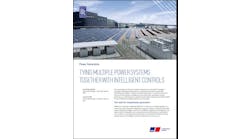Steven Nadel, ACEEE
(This post originally appeared on the ACEEE Blog.)
As 2013 draws to a close, it’s useful to reflect back on the past year and look forward to the coming one. Despite political and economic headwinds, the states and federal and local governments continued to make progress on energy efficiency policies in 2013. Among the states, Mississippi and Louisiana decided to begin utility programs, and Connecticut and Maine passed legislation to advance efficiency initiatives. Seven states adopted one of the latest model building energy codes, and eight states signed a memorandum of understanding on actions to put 3.3 million plug-in electric and fuel cell vehicles on the road by 2025.
On the federal level, the Department of Energy and the Office of Management and Budget made real progress on ending the backlog of new equipment efficiency standards, with new standards finalized for distribution transformers and microwave ovens, and many draft standards issued. President Obama announced a climate change action plan that includes a variety of actions to advance efficiency. Bipartisan energy efficiency legislation was reported out of the Senate Energy Committee and was brought to the floor for debate. It has not yet come to a vote since some senators chose to use the floor time to insist on votes on unrelated amendments.
Progress also continues at the local level with many local governments pursuing comprehensive approaches to energy efficiency and some developing new policy and program initiatives. For example, Chicago adopted an innovative policy to improve residential energy use disclosure while also becoming the ninth and most recent U.S. city to require commercial building energy disclosure.
At the macro level, Energy Information Administration data through September of 2013 indicate that both electricity consumption and transportation sector oil use are down relative to the same period in 2011 and 2012. Policies in areas like utility-run energy efficiency programs, equipment and vehicle standards, and investments in alternative transportation infrastructure seem to be having a noticeable effect on electricity and oil consumption
Looking ahead to 2014, the Obama administration has significant opportunities to make progress on energy efficiency without requiring Congress to act. The president’s climate action plan includes a number of administrative actions that will take place in 2014, including the release of draft carbon dioxide emissions standards for existing power plants and draft fuel economy standards for heavy trucks.
Final equipment standards are scheduled for a variety of products including electric motors, commercial refrigeration equipment, and residential furnace fans. DOE and HUD are working on several housing initiatives including new energy standards for manufactured homes, new energy efficiency requirements for federally-backed mortgages, and possibly modifications to mortgage underwriting criteria to include consideration of a home’s energy efficiency. Bipartisan energy efficiency legislation also might move in 2014—efforts are underway to bring an improved bipartisan bill to the Senate floor. And work on tax reform is likely to begin.At the state level, many states will be considering new energy efficiency policies, including possible new rules in Oklahoma, equipment efficiency standards in California, and energy savings targets in Maryland and New York. Many cities are pursuing additional energy efficiency actions to improve sustainability and resiliency at the local level. For example, policies to promote combined heat and power plants are likely to expand as many cities have noticed how these plants helped to keep the lights on at critical facilities in the aftermath of Hurricane Sandy.
Here at ACEEE, we anticipate a busy 2014. We’ll be working on the many policies discussed above, publishing more than 30 new reports, and hosting 4 conferences. Our reports will address such topics as new directions for utility energy efficiency, intelligent efficiency, whole building retrofit strategies, and energy efficiency in freight and as an environmental compliance strategy. As for conferences, of particular note is our biennial Summer Study on Energy Efficiency in Buildings in August, which will likely sell out this spring as it has in past years. We are also planning our first conference on intelligent efficiency, likely to be held in California in November.We wish everyone an efficient new year and look forward to working with many of you to move some of these ideas forward in 2014.
Steven Nadel is the Executive Director of the American Council for an Energy-Efficient Economy.







